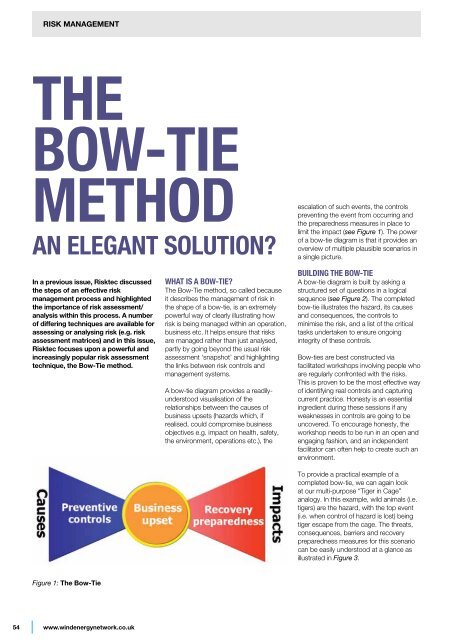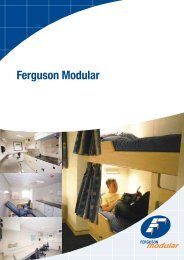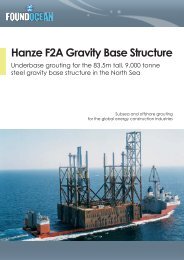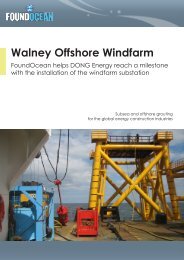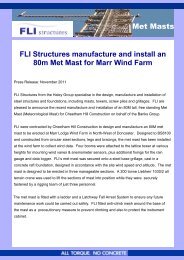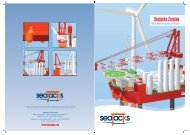UNEXPLODED ORDNANCE - Wind Energy Network
UNEXPLODED ORDNANCE - Wind Energy Network
UNEXPLODED ORDNANCE - Wind Energy Network
Create successful ePaper yourself
Turn your PDF publications into a flip-book with our unique Google optimized e-Paper software.
RISK MANAGEMENT<br />
The<br />
BOW-TIE<br />
Method<br />
An Elegant Solution<br />
In a previous issue, Risktec discussed<br />
the steps of an effective risk<br />
management process and highlighted<br />
the importance of risk assessment/<br />
analysis within this process. A number<br />
of differing techniques are available for<br />
assessing or analysing risk (e.g. risk<br />
assessment matrices) and in this issue,<br />
Risktec focuses upon a powerful and<br />
increasingly popular risk assessment<br />
technique, the Bow-Tie method.<br />
What is a Bow-Tie<br />
The Bow-Tie method, so called because<br />
it describes the management of risk in<br />
the shape of a bow-tie, is an extremely<br />
powerful way of clearly illustrating how<br />
risk is being managed within an operation,<br />
business etc. It helps ensure that risks<br />
are managed rather than just analysed,<br />
partly by going beyond the usual risk<br />
assessment ‘snapshot’ and highlighting<br />
the links between risk controls and<br />
management systems.<br />
A bow-tie diagram provides a readilyunderstood<br />
visualisation of the<br />
relationships between the causes of<br />
business upsets (hazards which, if<br />
realised, could compromise business<br />
objectives e.g. impact on health, safety,<br />
the environment, operations etc.), the<br />
escalation of such events, the controls<br />
preventing the event from occurring and<br />
the preparedness measures in place to<br />
limit the impact (see Figure 1). The power<br />
of a bow-tie diagram is that it provides an<br />
overview of multiple plausible scenarios in<br />
a single picture.<br />
Building the Bow-Tie<br />
A bow-tie diagram is built by asking a<br />
structured set of questions in a logical<br />
sequence (see Figure 2). The completed<br />
bow-tie illustrates the hazard, its causes<br />
and consequences, the controls to<br />
minimise the risk, and a list of the critical<br />
tasks undertaken to ensure ongoing<br />
integrity of these controls.<br />
Bow-ties are best constructed via<br />
facilitated workshops involving people who<br />
are regularly confronted with the risks.<br />
This is proven to be the most effective way<br />
of identifying real controls and capturing<br />
current practice. Honesty is an essential<br />
ingredient during these sessions if any<br />
weaknesses in controls are going to be<br />
uncovered. To encourage honesty, the<br />
workshop needs to be run in an open and<br />
engaging fashion, and an independent<br />
facilitator can often help to create such an<br />
environment.<br />
To provide a practical example of a<br />
completed bow-tie, we can again look<br />
at our multi-purpose “Tiger in Cage”<br />
analogy. In this example, wild animals (i.e.<br />
tigers) are the hazard, with the top event<br />
(i.e. when control of hazard is lost) being<br />
tiger escape from the cage. The threats,<br />
consequences, barriers and recovery<br />
preparedness measures for this scenario<br />
can be easily understood at a glance as<br />
illustrated in Figure 3.<br />
Figure 1: The Bow-Tie<br />
54<br />
www.windenergynetwork.co.uk


